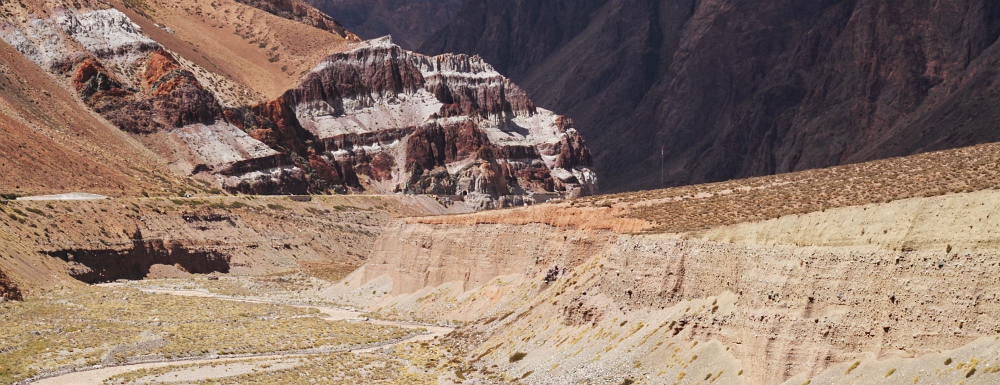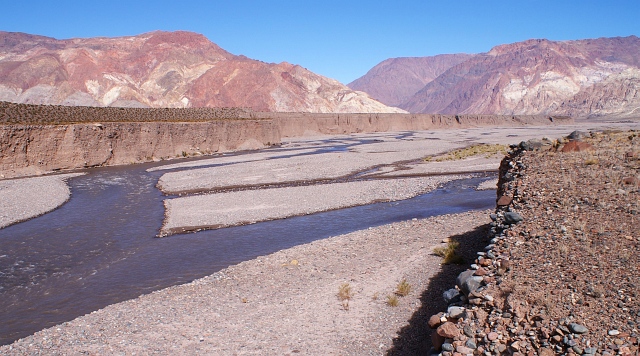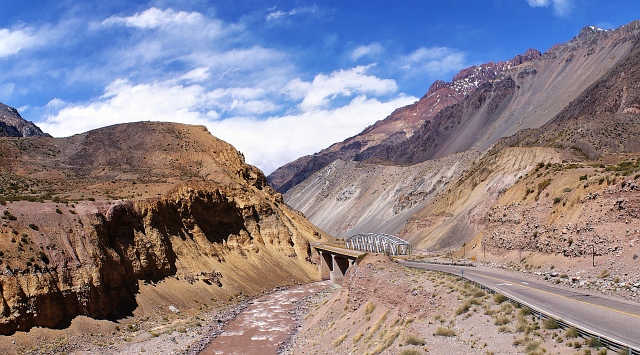

Between Uspallata and Punta de Vacas, the Río Mendoza cuts through the Cordillera Frontal. This is the geomorphologically most impressive section on the way from Mendoza to the border between Chile and Argentina. The National Road 7 mostly runs high above the river bed, so that already the journey itself allows for fantastic impressions of the landscape, which is here mainly characterized by river terraces: the often braided river bed is incised tens of metres into older fluvial deposits. However, also the consequences of landslides - ranging from debris flows to rock slides - are omnipresent. Several points of interest invite for a stop on the way, whereby the most comprehensive view can be enjoyed just upstream from the small village of Polvaredas.
Click into the title image to get a first impression of the extraordinary geodiversity characterizing the valley section between Uspallata and Punta de Vacas.


















